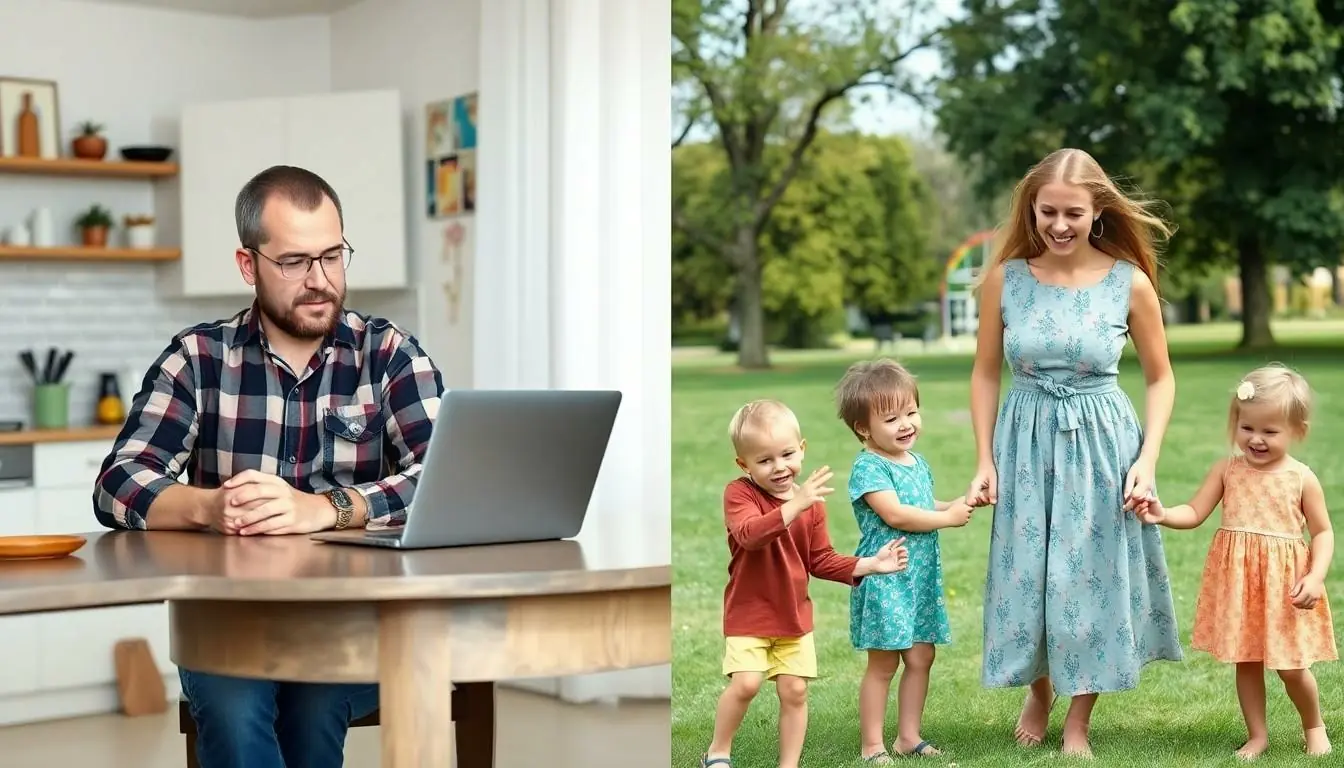Navigating the world of parenting post-separation can feel like trying to solve a Rubik’s Cube blindfolded. With terms like parallel parenting and co-parenting thrown around, it’s easy to get lost in the maze of options. But fear not! Understanding these two styles can help parents create a smoother path for their children.
Table of Contents
ToggleUnderstanding Parallel Parenting Vs Co Parenting
Understanding the differences between parallel parenting and co-parenting helps parents choose the right approach after separation. Each method offers unique ways to manage child-rearing responsibilities.
Definition of Parallel Parenting
Parallel parenting involves minimal direct interaction between parents. It works well for those who have high conflict or significant emotional distance. Parents maintain separate lives and make independent decisions regarding their children’s upbringing. Activities and schedules are communicated through established channels, like email or messaging apps. Children split time between each parent’s home without necessitating constant coordination. This method fosters stability and allows children to adapt to each parent’s style while minimizing exposure to conflicts.
Definition of Co Parenting
Co-parenting emphasizes collaboration and communication between parents. This approach focuses on shared responsibilities and cooperative decision-making concerning the child’s life. Parents discuss schedules, education, and health care together to provide a united front. Regular communication enhances consistency in parenting, positively impacting the child’s emotional well-being. Joint activities, such as school events or family functions, help reinforce a supportive environment. Successful co-parenting relies on mutual respect and effective communication strategies for addressing challenges.
Key Differences Between The Two Approaches

Understanding the key differences between parallel parenting and co-parenting clarifies their distinct communication and decision-making styles.
Communication Styles
Parallel parenting relies on limited interaction. Parents communicate mainly through established channels, such as email or messaging apps. This method minimizes direct conflict and emotional exchanges. Co-parenting emphasizes open dialogue. Parents share thoughts on daily routines and engage in face-to-face discussions. Effective communication becomes vital for joint problem-solving and planning. Each method addresses differing levels of conflict, making the choice significant for child well-being and parental relationships.
Decision Making Processes
In parallel parenting, decisions often occur independently. Parents may consult one another only when necessary and adhere to their established guidelines. This approach suits high-conflict situations, as it reduces frustration and disagreement. Co-parenting involves shared decision-making. Parents collaborate on significant choices regarding education, healthcare, and extracurricular activities. Consensus is crucial, and both parents work to align their parenting strategies. This cooperative dynamic fosters stability and better supports children’s needs and preferences.
Benefits and Challenges
Understanding the benefits and challenges associated with parallel parenting and co-parenting aids in making informed decisions for family dynamics.
Advantages of Parallel Parenting
Parallel parenting minimizes direct confrontation, which proves vital for high-conflict situations. Parents communicate through designated channels, ensuring interactions remain low-stress. This strategy allows each parent to maintain autonomy in decision-making, preserving personal boundaries. Children experience reduced tension, leading to fewer emotional struggles during transitions. In addition, respect for individual parenting styles fosters adaptability in children. They become accustomed to different environments, which can enhance their resiliency.
Advantages of Co Parenting
Co-parenting promotes collaboration, encouraging regular discussions between parents about their child’s needs. Open communication paves the way for effective decision-making concerning education, healthcare, and activities. This structured approach strengthens the child’s sense of stability, fostering emotional security. Joint parenting efforts also model healthy relationship behaviors, showcasing teamwork to the child. Such environments help nurture strong bonds between parents and children. Parental cooperation builds trust and confidence, reinforcing the support system needed for children’s growth.
Common Challenges Faced
Parallel parenting often faces challenges related to limited communication. Parents might struggle with misinterpretations or ongoing misunderstandings due to infrequent contact. The lack of interaction can lead to feelings of isolation and uncertainty regarding parenting decisions. Conversely, co-parenting may face difficulties in maintaining consistent boundaries. Disagreements over rules can create confusion for children. Furthermore, heightened emotions occasionally lead to conflicts during discussions. Such challenges require ongoing efforts to improve communication and emotional health for all involved.
When to Choose Each Approach
Choosing between parallel parenting and co-parenting depends on the circumstances surrounding the separation. High-conflict situations call for parallel parenting. In such cases, it’s crucial to minimize direct interaction to protect all parties’ emotional well-being. Benefits include reduced tension and a focused approach to co-parenting responsibilities.
Co-parenting works best when parents can communicate effectively. Strong communication allows for collaborative decision-making about routines and essential aspects like education and healthcare. Families thrive in supportive environments when parents model healthy relationship behaviors.
Consider individual differences in parenting styles and values. Parallel parenting accommodates distinct approaches, allowing children to experience each parent’s style without parental conflict intruding. Open dialogue in co-parenting can enhance trust and security, fostering a positive environment for children.
Evaluate any history of conflict when deciding. Persistent disagreements make parallel parenting a favorable choice. Effective co-parenting might become challenging if past confrontations affect current interactions.
Focus on long-term effects on children’s emotional health. Parallel parenting might serve better in maintaining children’s stability in high-conflict situations. Co-parenting creates opportunities for children to develop strong communication skills by witnessing cooperative behavior.
Engaging with a mediator or counselor can help navigate this choice. They provide guidance on assessing individual situations and recommending the best approach. Understanding the distinct elements of each method enables parents to make informed decisions that prioritize their children’s well-being.
Choosing between parallel parenting and co-parenting hinges on the unique dynamics of each family. For those facing high-conflict situations, parallel parenting offers a way to minimize direct interaction while ensuring children’s needs are met. This approach allows parents to maintain their individual styles without the stress of constant confrontation.
On the other hand, co-parenting thrives in environments where communication is effective. It encourages collaboration and shared decision-making, which can significantly benefit children by providing them with a sense of stability and security.
Ultimately, understanding the strengths and challenges of each method is crucial. Parents should prioritize their children’s emotional well-being and consider seeking professional guidance to navigate their options effectively.



